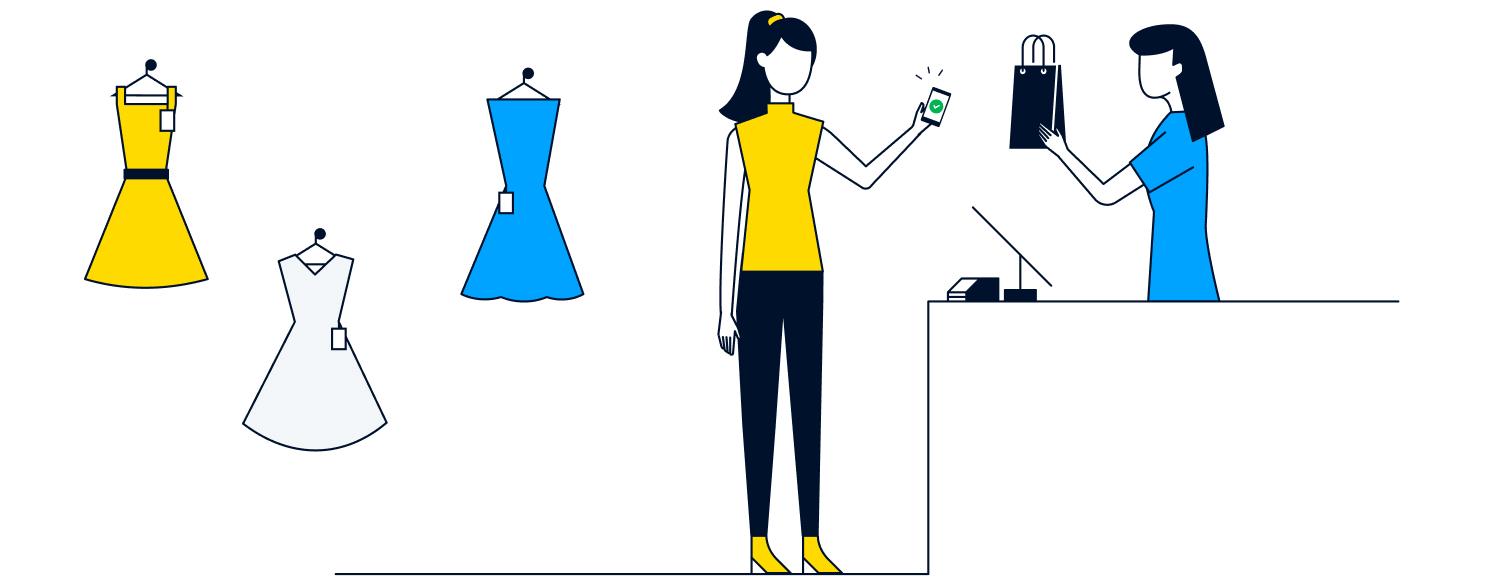Guides and reports
Why retailers need to get real: Gen Z prefers in-store experiences
We teamed up with 451 Research to learn what matters to Gen Z consumers and how they compare to Millennials (Gen Y).

If you’re a retailer in 2019, the year 1995 is having a critical impact on your current marketing strategy. Not because of the fashion styles it spawned (remember bucket hats and biker boots?), but because it’s the year the first Gen Z consumers were born. As these post-Millennials enter the workforce and their purchase power increases, retailers and marketers need to adjust accordingly.
What’s new about the new generation? A lot. This demographic group (between ages 4 and 24) grew up under very different economic circumstances than the Millennials before them, and they have much different priorities when it comes to shopping and payment preferences. For one, they prefer actual face time to a FaceTime phone call, valuing human connection over virtual connectivity. In other words, some — but not all — of the trends of the mid-’90s are back, in the way Gen Z acts, socializes, and shops.
To help you understand this generation better, we put together a few key data points with the help of global research and advisory firm 451 Research. Read on to see what matters to Gen Z consumers and how they compare to Gen Y.

Getting To Know The Gen Z Shopper
According to census data, Gen Z is a segment with more than 68 million young people in it. That’s 68 million potential customers with a growing share of wallet and unique behaviors that retailers need to cater to. Some of those behaviors seem obvious, but some may surprise you.
For example, in the consumer study conducted by 451 Research, 53% of Gen Z respondents said they love to use digital technology. No surprise there, since this is a generation of digital natives who were practically born with screens in their hands. They also love to shop, with 57% saying so in the survey. But perhaps what’s interesting is the many ways they are completely opposite in shopping behaviors from the generation before them. 451’s analysis shows that Gen Z and Gen Y differ in a number of key consumer metrics.

Z Is For Zigzag
Where Millennials zig, post-Millennials zag. Taking a look at exactly where the divides happen can help retailers capitalize on the changing trends.
When it comes to doing their research, personalization and context are huge for Gen Z. That means who they choose to get advice and opinions from is disproportionately important to them versus Gen Y. When researching a new product or brand, Gen Zers lean more on word of mouth and talking with friends and family than Millennials by a margin of 48% to 38%. They’re also more likely to use social media as a shopping platform to find new products, again trusting their inner circle more than Millennials by a score of 30% to 20%.

Another noticeable difference between consumers in their 20s and those in their 30s is how much value they place on convenience. Sixty-three percent of Gen Y respondents prefer the comfort and convenience of shopping at home, with just 53% of Gen Zers saying the same. Millennials also live up to their “I want it now” reputation when it comes to payments: 30% say abuy-now, pay-later programwould improve their in-store payments experience, whereas just 19% of those surveyed in Gen Z agree. And Millennials like the person-free experience of a kiosk, compared to the personal touch preferred by Gen Z. Thirty-four percent of Gen Y said they’d be more encouraged to purchase at an in-store kiosk but only 24% of Gen Z would.
A third key split between the two groups is how they use digital assistants while shopping. When asked for reasons why they would use a smart speaker, Gen Z said discounts or special offers matter to them 49% of the time, but only 34% for Millennials.
For reassurance around fraud, Gen Zers also had strong feelings, with 38% saying they needed to know there was a secure system in place, compared to just 27% of Gen Yers. This is consistent with other research which has shown that Gen Z is more pragmatic than Millennials—likely a result of growing up with parents who faced economic recession.

Brick-and-mortar is back
Overall, here are your key takeaways: the data points to the fact that Gen Z prefers people over processes. They care more about experience than expediency, and they’ll trust an assistant like Alexa, as long as she finds them a great deal.

Want to learn even more about Gen Z? Check out this deep dive into the group’s media consumption and shopping habits.Download the full 451 Research report here
Are you ready for the next generation of shoppers?
Learn about the Gen Z consumer and discover how they differ from Millennials in our infographic.
Download PDF